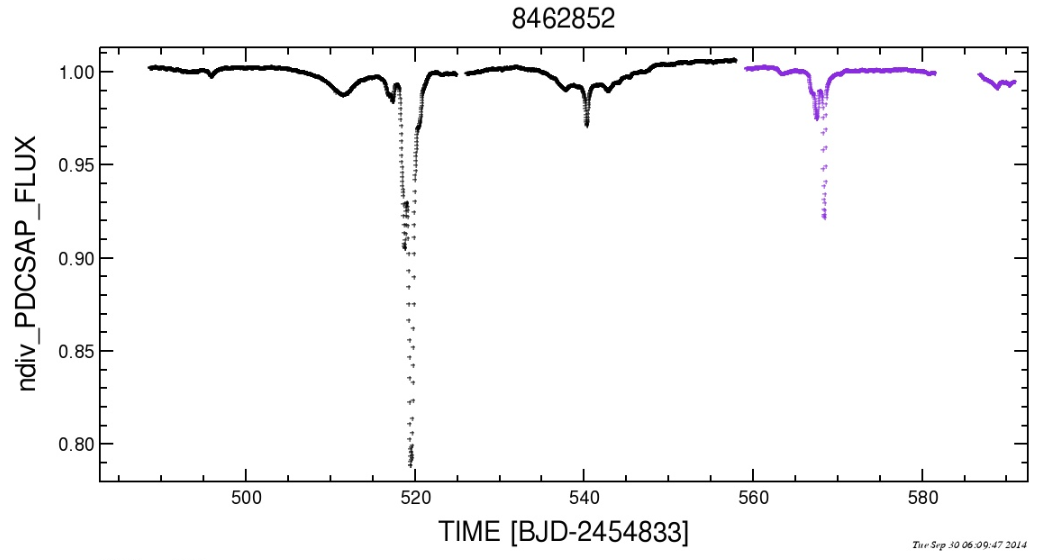 In September 2015 a star in Cygnus was observed by the Kepler Satellite; unlike the millions of other stars observed in the Kepler field of view this star demonstrated a very unique light curve. And unlike many of the interesting transits found by Kepler the first identification was done by Citizen Scientists on planethunters.org. This marked a major milestone for crowd sourced science and provided an amazing collaboration between professional and amateur scientists.
In September 2015 a star in Cygnus was observed by the Kepler Satellite; unlike the millions of other stars observed in the Kepler field of view this star demonstrated a very unique light curve. And unlike many of the interesting transits found by Kepler the first identification was done by Citizen Scientists on planethunters.org. This marked a major milestone for crowd sourced science and provided an amazing collaboration between professional and amateur scientists.The star, KIC 8462852 (also known as Tabby's Star), is a seemingly normal F-type star in the constellation Cygnus.

 What makes it unusual is the seemingly unpredictable nature of its luminosity.
What makes it unusual is the seemingly unpredictable nature of its luminosity.Stars that change their brightness are not uncommon and there are in fact many reasons why brightness may change. This can include intrinsic variations of the star's brightness due to Star Spots or compositional changes like Cepheid variable stars. Or it may be due to another companion nearby; Algol in the constellation Perseus is a well known example of this. In the last 10 years the idea of eclipsing stars has been applied to the search for extrasolar planets- as a planet passes in front of it's parent star (or transits) it causes a small dimming of the star. The dimming is very slight; Jupiter, the most massive planet in our solar system would produce a dimming of around 1%. Smaller planets like the Earth or Mars would produce dimming less than 0.05%. Despite these tiny changes in light, the variations are within the range of modern digital cameras and using this technique the Kepler satellite has discovered thousands of exoplanets.
What makes KIC 8462852 unusual is both the degree of dimming (depth) and the seemingly random nature of its dimming. Unlike other exoplanets there does not seem to be a regular period dimming (which would be caused by a planet moving in a circular orbit). In addition, the depth of some of minimums has been as much as 20% of the star's brightness!

There have been a few attempts to explain the light curve:
- Young Star with an asymetric dust ring
- Planetary collision resulting in debris in the system
- Comet swarms passing through our line of sight
- Ringed planet with asteroids in front and behind it
- An Alien megastructure (Yes. Aliens!)

No comments:
Post a Comment